
Can geometry be the key driver of sustainable construction?
Can geometry be the key driver of sustainable construction?
"The use of Building Information Modelling (BIM) presents a multi-dimensional digital representation of the building being constructed, allowing for accurate building simulation and environmental impact prior to actual construction work."
Marc Grosskopf
Global Business Unit Manager, Building TIC, Real Estate & Infrastructure Division, TÜV SÜD
Wednesday, January 24, 2018
From the Great Pyramid of Giza, to the Taj Mahal and Stonehenge, these ancient monuments prove that great architecture can withstand the test of time. And if there’s one other thing they have in common, it’s their precise geometry.
Whether it’s the famed Golden Ratio or striking symmetry, geometry has been at the core of every building since the early ages – big, small, regular or odd-shaped. Today, the same principles inform architects in the planning, design, construction, maintenance, and renovation, of modern complexes and skyscrapers, as they aim to find a delicate balance between sense and sustainability.
According to the World Green Building Trends 2016 report, sustainable buildings are on the rise. Why? Business owners are slowly beginning to recognise the value of future-proofing their properties, as they reap the benefits of more efficient energy consumption by way of lower operating costs.
Viewed as a positive change in the eyes of their stakeholders, it is also a proactive move in a collective agenda to combat one of the biggest threats of our time – climate change. The Intergovernmental Panel on Climate Change (IPCC) has projected the growth of building-related greenhouse gas emissions to be 26 percent by the year 2030 – that’s a hefty 15.6 billion metric tons. Sustainable building design could reduce, even change the course of that prediction.
As the number of urban living areas increases exponentially by the year 2045, cities need to be ready to adapt to this flux. High-density construction will inevitably pose as a key feature of future sustainable cities, with geometry being a crucial consideration in the complex design process.
“Building geometry, or ‘massing’, entails strategic planning around the shape and size of the building, taking into close consideration factors such as the maximisation of natural energy from the wind and sun, the impact of natural vegetation, or even the proximity to its surrounding buildings,” explains Marc Grosskopf, Global Business Unit Manager, Building TIC, Real Estate & Infrastructure Division, TÜV SÜD.
Small, intricate details also play a significant role: “From the angle to the arch of the building, these elements can also help to maximise heating and cooling, since the surface area is exposed to the sun at different times of the day,” says Grosskopf.
Architects make several of these important decisions at the planning stage. “The use of Building Information Modelling (BIM) has greatly enabled that process by presenting a multi-dimensional digital representation of the building being constructed. The elements in a BIM model have all the characteristics of their actual counterparts, allowing for accurate building simulation and an understanding of the way the environment will impact it before actual construction work begins.”
Grosskopf adds, “BIM enables a much higher intelligence in geometry-based simulations and optimisations. Linking spaces and layouts of facades and rooms as well as material criteria with energy and facility management issues, BIM is the digital method to make better and faster decisions about construction costs related to highest design quality and operational expenses. Examples such as the Shanghai Tower and Country Park Clinic in Moscow show the outstanding impact of BIM for a more sophisticated building design in harmony with maximised usability and cost reductions for construction and operation.”
Some countries have already taken a positive step in this direction, adding buildings with interesting geometrical exteriors to their cityscapes. Besides their eye-catching aesthetic, what you might not know is that these unique designs also address a pressing need today – sustainability.
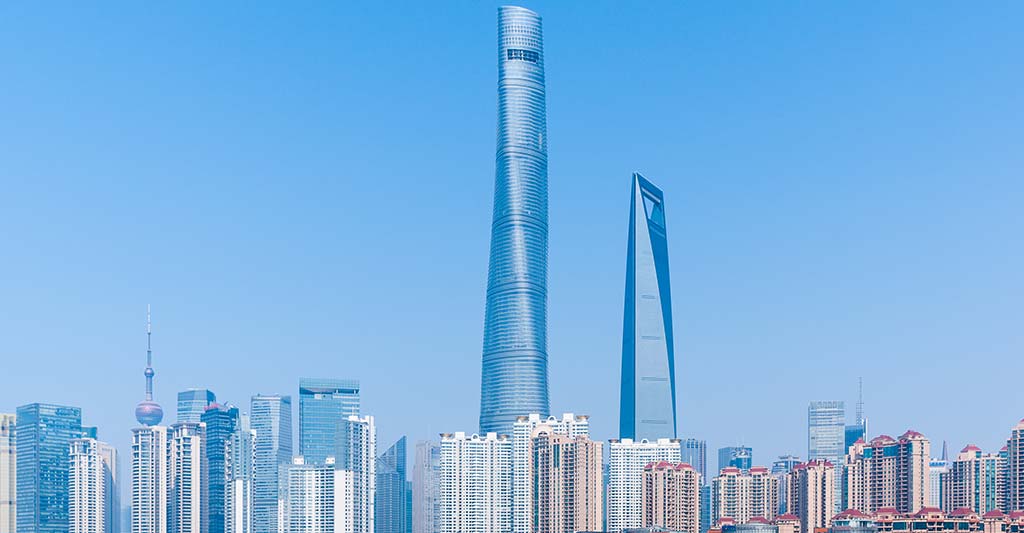
Twisting by 120-degrees from the base to the top, this creates a rotation that is optimal for minimising wind loads. Its twist design allows for a lighter structure, which saves $58 million in structural material, and reduces wind load by 24%
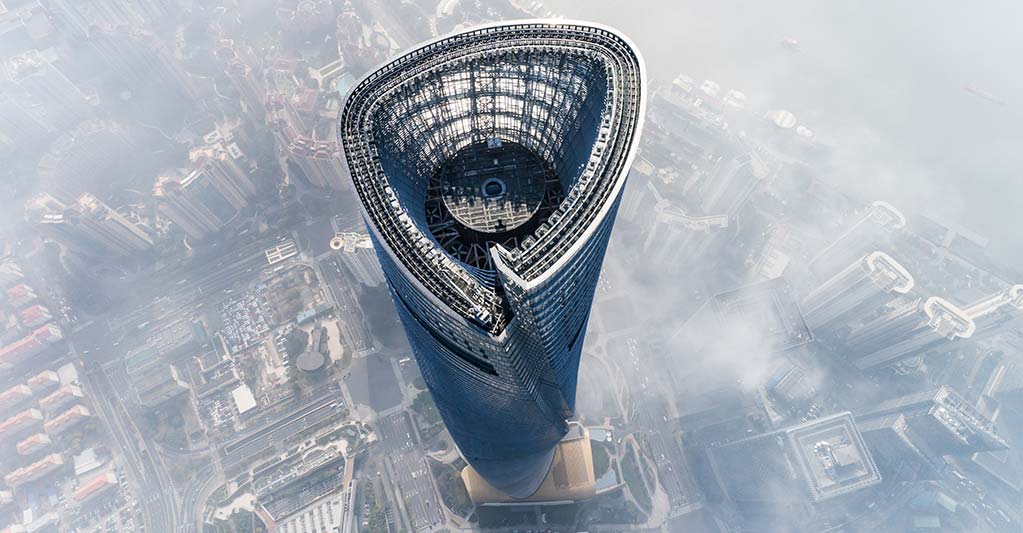
The hollow roof captures and harvests rainwater, and acts as a blackwater treatment facility. This reduces the tower’s water usage by 40%, which is equivalent to almost 425 Olympic-sized pools of water saved a year!
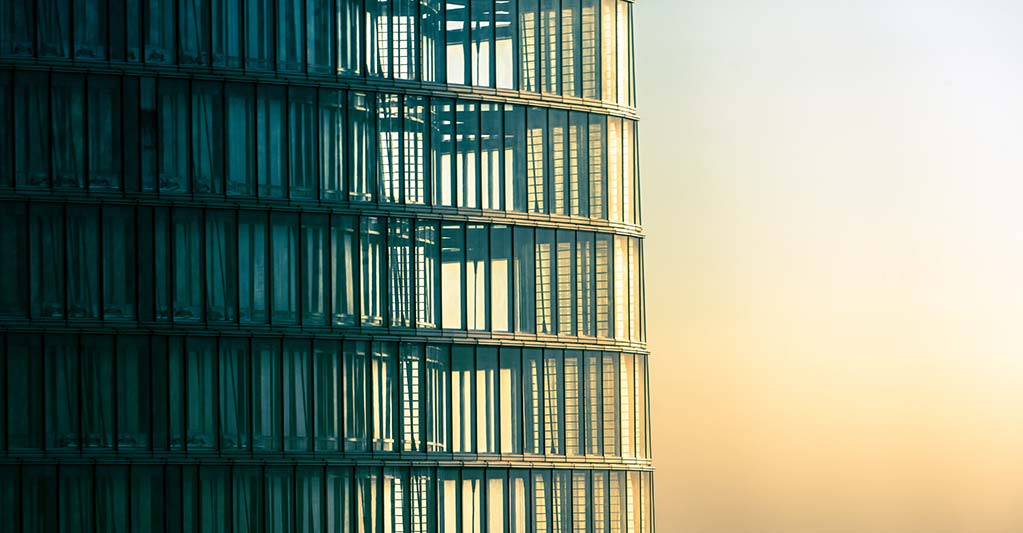
Another interesting feature includes fritted glass on the outer wall that provides additional shade from the sun. This is aided by horizontal ledges at each floor level that can block the sun. The 45 wind turbines atop the building also produce an estimated 54,000 kWh/year in renewable energy, powering the exterior lighting, including some of the park areas.
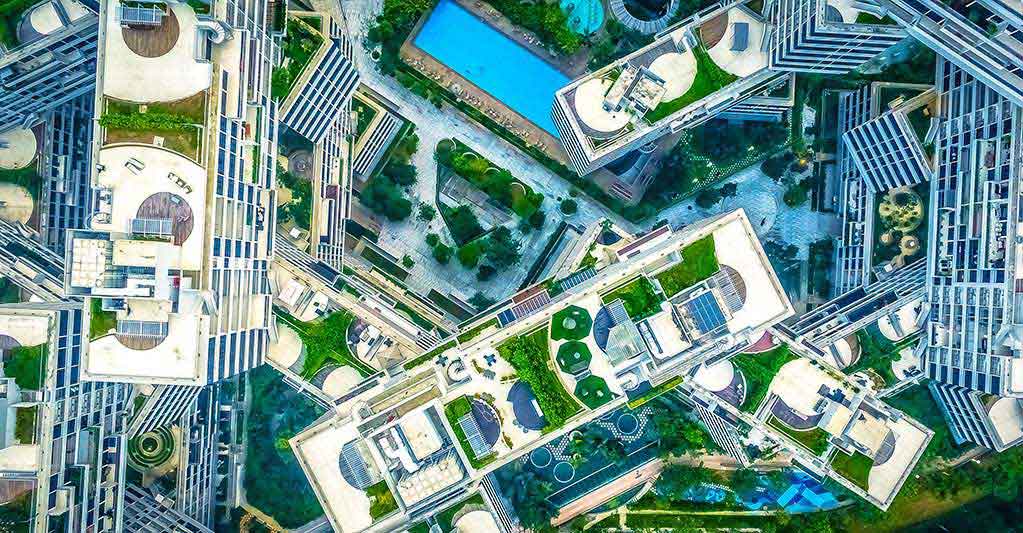
Its stacked design creates multiple horizontal surfaces that are converted into green spaces, such as roof gardens and landscaped terraces – increasing the green space to 112 percent of the land area. The blocks are also angled in such a way that allows them to cast deep shadows, providing cool shade to its residents.
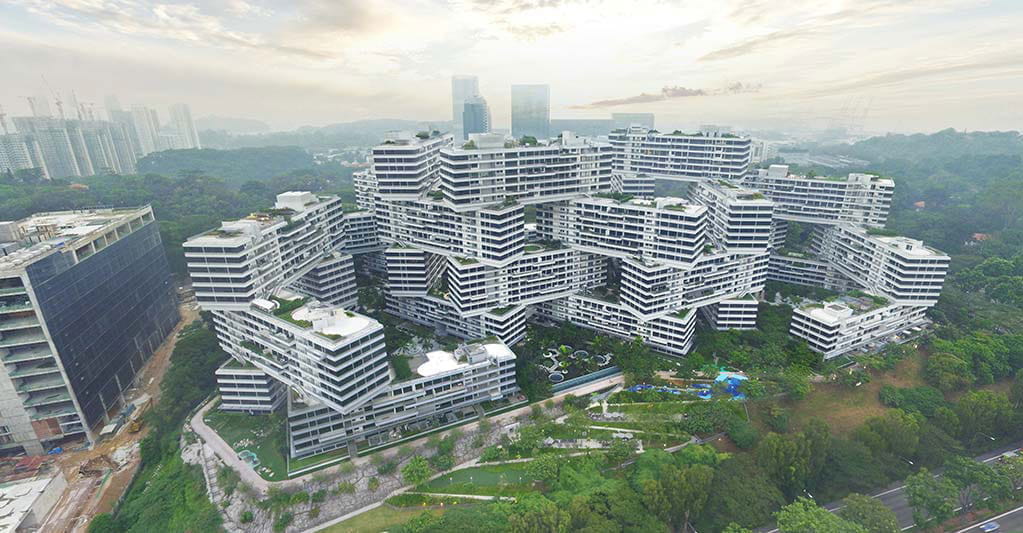
The apartments are grouped in blocks of 6, 18 and 24 stories with “core” lobbies that serve three to four units per floor. This design idea provides efficient circulation without long corridors. These open-air lobbies are naturally lit and ventilated, bringing daylight and fresh air into common spaces, and reducing electricity usage
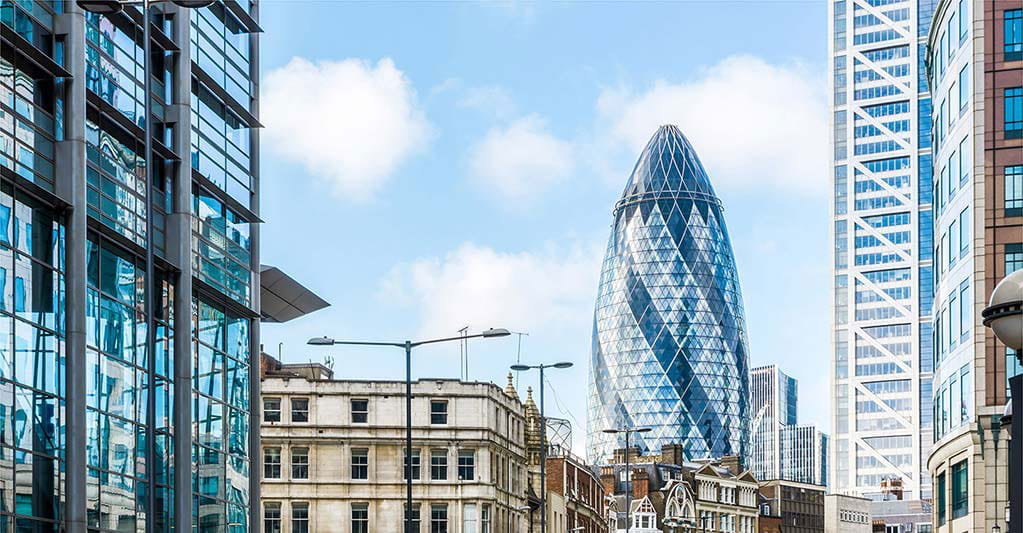
Using parametric modelling, the aerodynamic curvature of the building has been precisely defined to reduce wind load. The lower part of the building also tapers to facilitate greater wind flow around it, creating an “external pressure differential” to provide optimal ventilation.
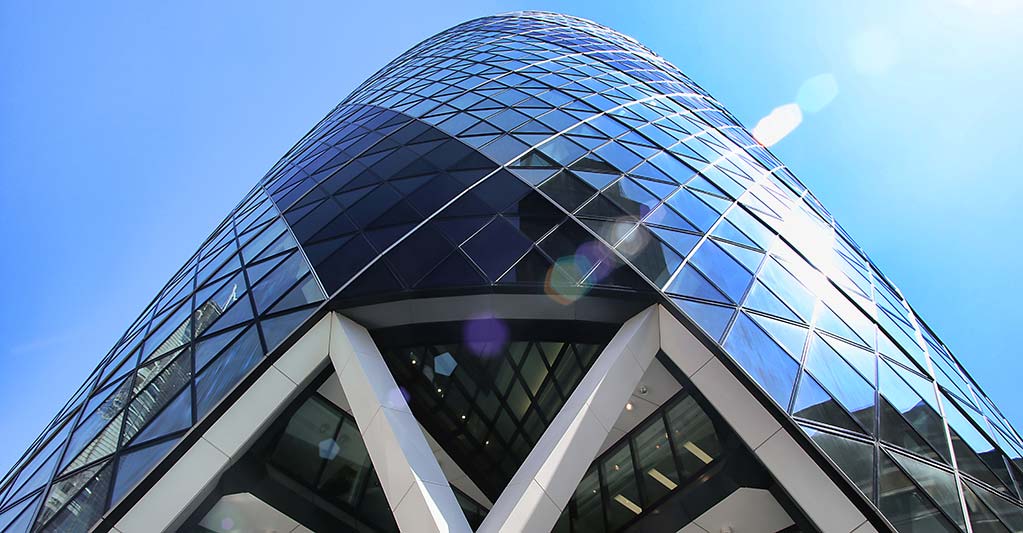
These break-out spaces have two purposes: They function as common meeting areas, as well as to regulate warm air in and out of the building through passive solar heating during summer and winter respectively. This reduces the building’s dependence on air conditioning, cutting its energy consumption by almost half.
When it comes to designing energy-efficient buildings, there are many factors to take into consideration. Often, there is a trade-off between formulating precise buildings optimised to reduce environmental impact, and balancing that with the energy-intensive process of creating the very structures that support them. Additional fittings or extensions often hike up the cost of a building even more.
“In implementing energy efficient features, architects need to carefully optimise their designs for both operational energy and the energy required to make these structural materials,” says Grosskopf.
Today, advanced simulation technology and building information modeling (BIM) systems allow for complex buildings to be digitally modeled with accurate geometry. This can help building owners make feasible green design decisions in the early stages of development, where timeline, costs and projection of building management data is considered to assess the overall return on investments. “TÜV SÜD has adopted BIM from 3D to 7D, across the entire building construction lifecycle to efficiently plan, design, construct and manage infrastructure projects,” he says.
Adding on, TÜV SÜD also provides assistance in the pre-construction phase in support of sustainable design, from “providing energy efficiency advice on building structure, coming up with the right approach to optimise facilities and processes”, to green products testing, green materials selection and even obtaining the right certification to maintain the building’s high performance in line with international standards.
The critical components of a building are still focused on safety and quality standards. While it will take time before building geometry considerations move into the mainstream, at this stage sustainability design contributes to the aesthetic appeal of buildings, and could soon prove to be a trend for cities of the future as populations grow denser and environmental responsibility gets cast into the spotlight.
Learn more about constructing sustainable buildings today.
Site Selector
Global
Americas
Asia
Europe
Middle East and Africa